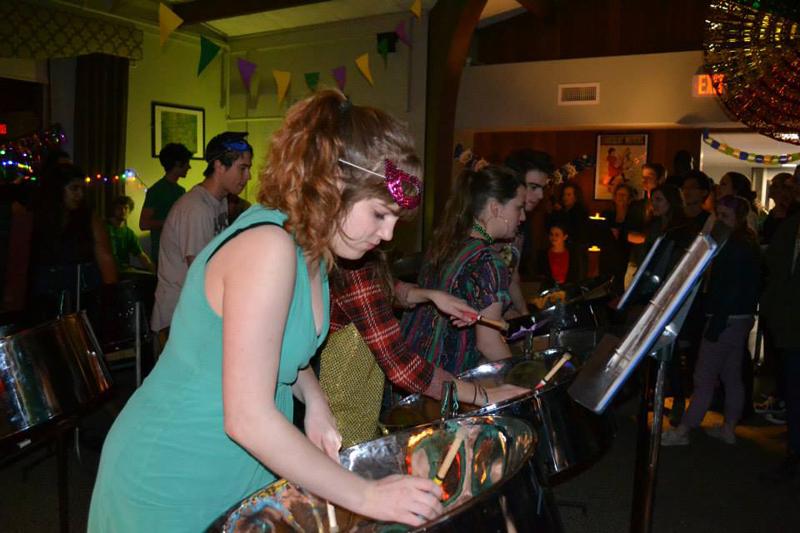Mardi Gras Party Celebrates French, American Traditions
March 14, 2014
La Maison Francophone, better known as French House, held its most-hyped annual event last Friday: the Mardi Gras celebration. Mardi Gras, French for “Fat Tuesday,” is celebrated the Tuesday before the season of Lent begins. The “Fat” in the holiday’s name is derived from the huge meal Catholics often eat before the fasting associated with Lent.
Louisiana, the state most strongly associated with Mardi Gras celebrations, inherited the tradition from its former colonizer, France. Originally, the French monarchy would consume a cow that had been especially fattened for their holiday meal. This Boeuf Gras, or “Fat Beef,” tradition was inaccessible to many Louisianan colonists, so the tradition instead became known as “Mardi Gras.”
New Orleans’s rich culture of African, Caribbean and European influences has made the city the mainstay of American Mardi Gras celebrations. Important elements of the revelry include costumes, masks, parades and music, which are typically provided by the krewes, the organizational bodies that orchestrate parts of the event. In the case of Oberlin’s French House celebration, the krewe consisted of the hard-working Faculty-in-Residence and French lecturer Thomas Chevrier and French Language Teaching Assistants Celia Cassin and Antoine Blanpain.
With the help of masks, crepes, low lighting and traditional yellow, green and purple beads, the Maison Francophone krewe conjured the magical, mysterious feeling of a traditional Mardi Gras celebration in the French House lounge. The incredible OSteel and brilliant New Orleans Jazz Quartet provided the music, completing the lounge’s transformation.
Steel drums, also called steel pans, originated in Trinidad and Tobago in the late 19th and early 20th centuries. They have a surprising connection to Carnival and Mardi Gras, making OSteel’s appearance on Friday particularly appropriate. Forbidden by Europeans to join Carnival, African and Creole people created their own celebration called Canboulay. Since ceremonial drumming was banned in Trinidad in 1884, Trinidadians were forced to skirt the regulations by substituting the drums for 55-gallon oil barrels, eventually resulting in the steel drums that are familiar today.
Judging by the energy of the crowd at the Maison Francophone celebration, the Canboulay had the last laugh. OSteel performers played together seamlessly; each passing song seemed more nuanced. It was also clear that while each drummer was deeply concentrated on his or her work, the players were still having fun, as demonstrated by the head-bobbing and shoulder-swaying of the musicians.
The same can be said about the New Orleans Jazz Quartet: they were there to have fun. The quartet’s energy and cohesion drove not only their playing, but also the excitement of the crowd, inciting impromptu swing and other dancing among the crowd and generally happy faces all around.
The same can be said about the New Orleans Jazz Quartet: they were there to have fun. The quartet’s energy and cohesion drove not only their playing, but also the excitement of the crowd, inciting impromptu swing and other dancing among the crowd and generally happy faces all around.
The two musical groups were especially well-received considering the Mardi Gras theme, but the musicians’ level of comfort with each other and with performing in front of an audience would make them both strong candidates for any Oberlin event.
Friday’s belated Mardi Gras event was robustly attended, treating attendees to an atmospheric celebration that incorporated many classical aspects of the holiday. The festival’s French roots made the Maison Francophone the ideal location for such an event, an on-point fusion of music, food and culture that did the French-originated holiday justice.



















